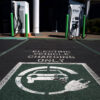Nuclear waste is not just at nuclear power plants, but there’s also radioactive waste at universities, labs and hospitals across the country, as indicated in a recent Associated Press story.
These places have all kinds of nuclear waste? Much of it low-level nuclear waste. The United States Nuclear Regulatory Commission defines low-level radioactive waste as items that have become contaminated with radioactive material or have become radioactive through exposure to neutron radiation. This waste typically consists of contaminated protective shoe covers and clothing, wiping rags, mops, filters, reactor water treatment residues, equipments and tools, luminous dials, medical tubes, swabs, injection needles, syringes, and laboratory animal carcasses and tissues.
But there are other kinds of waste as well. University research and test reactors, for instance, generate high-level nuclear waste – highly radioactive materials produced as a byproduct of the reactions that occur inside nuclear reactors.
Then there is defense waste. We all benefit from the security that a strong military provides. Whether it is maintaining our nuclear deterrent or fueling our submarine force and aircraft carriers, our defense apparatus produces nuclear waste.
Managing nuclear waste isn’t just an issue for power plants or a concern for those states that have nuclear power. It’s an issue for all of us. Aside from the critical role that nuclear technology plays in research and medicine, even state that don’t have nuclear power plants often use nuclear energy. There are states like Wyoming and Utah that are nowhere near nuclear power plants but still receive 4% of their electricity from nuclear. And then there are states like Indiana that have no nuclear power plants but have cities like Indianapolis that get 23% of its electricity by nuclear.
Unfortunately, misunderstandings about nuclear waste often cloud good policy. Despite the fact that nuclear waste has been transported on roads and railways worldwide for years without a significant incident, the country still lacks a comprehensive nuclear waste disposal strategy. Indeed, more than 20 million packages with radioactive materials are transported globally each year–3 million of them in the United States. Since 1971, more than 20,000 shipments of spent fuel and high-level waste have been transported more than 18 million miles without incident.
But that doesn’t mean we should be complacent about security and safety, and it certainly doesn’t mean we’ve resolved this issue. Nuclear waste is a complicated problem and requires a comprehensive solution. Although some nuclear waste can be reprocessed into more energy, there will be remaining waste that needs to be placed somewhere else – opening a geologic repository is a necessary step. In essence, a comprehensive approach would include a combination of interim storage, recycling, and geological storage. If you’re a loyal Foundry reader, you’ll know I’ve said this before, but we really need a free-market approach to managing nuclear waste – check out Heritage Nuclear Analyst Jack Spencer’s paper here.




























